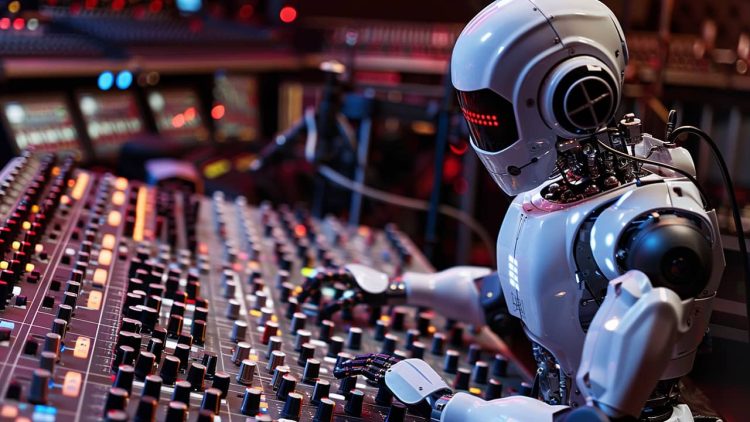Whether you are a music producer instrument player or podcaster, your lives will change forever with this Generative AI tool. The latest Adobe Music GenAI Control can generate your music with just text prompts. Let’s find out about its benefits and concerns.
Highlights:
- Adobe announces its latest music generation AI tool, calling it “Music GenAI Control”.
- Can perform various tasks starting from audio generation, extending audio, and even fine-tuning.
- It is still in its early phase and has not been released worldwide.
Adobe Calling it ‘Photoshop’ for Music
At the Hot Pod Summit in Brooklyn, Adobe gave a preview of its latest AI music-generation and editing tool called ‘Music Gen AI Control’.
Here is what they shared with the people to show what’s going on:
With the help of text instructions, users can create any type of music with this new Adobe tool, according to your needs. It can also edit audio without requiring specialized editing software, you can fine-grain the audio according to their needs and recommendations.
The tool also makes it possible to modify specific musical sections and create audio loops for those who require background music or backing tracks for creating content.
Here is what Adobe said about their new tool:
To begin, users can enter a text description that will be converted into music in a certain style, like “sad jazz” or “happy dance.” Users can then alter any repeated patterns, tempo, intensity, and structure, according to Adobe, using its integrated editing controls.
“With Project Music GenAI Control, generative AI becomes your co-creator. It helps people craft music for their projects, whether they’re broadcasters, or podcasters, or anyone else who needs audio that’s just the right mood, tone, and length,”
– Nicholas Bryan, Senior Research Scientist at Adobe Research
Adobe further claims that if you want to make the track long enough for things like a fixed animation or podcast segments, you may modify the generated audio on a reference melody and lengthen the audio fragments.
Recently, OpenAI revolutionized Video with Sora AI even using images, and now Adobe making breakthrough in the music industry, a lot happening in the Generative AI world.
How is This Model an Improvement?
Although similar tools surrounding music generation AI such as Google’s MusicLM and Meta’s open-source AudioCraft are already in the process of development, there is minimal to no support for manipulating the music output in these, and users can only create audio through text prompts.
This implies that developers would either need to use audio editing software to manually perform those modifications or keep creating audio from scratch until they achieve the desired results. Adobe is providing a brand-new experience for all users by allowing them to make changes and adjust their generated audio according to their needs.
“One of the most exciting things about these new tools is that they aren’t just about generating audio, they’re taking it to the level of Photoshop by giving creatives the same kind of deep control to shape, tweak, and edit their audio. It’s a kind of pixel-level control for music.”
Nicholas Bryan Senior Research Scientist at Adobe Research
The whole music industry will be revolutionized thanks to Adobe’s complete control features on audio and music. Remember, all it takes is one prompt!
Is it Ethical to Generate AI-based Audio?
Like all other Gen AI tools, Adobe has also left the world in a frenzy with ethical and safety concerns surrounding the generation of audio from text-based prompts. How real can the generated music be?
Viral music has been produced using GenAI to create home recordings with singers, lyrics, and sounds that are either authentic or almost so. Citing copyright, music firms have been fast to impose takedowns.
However, it’s still unclear if ‘deepfake’ music infringes on the intellectual property rights of musicians, record companies, and other rights holders, especially when it comes to GenAI music tools that have been trained on copyrighted material.
Gautham Mysore senior principal scientist and head of the CAVA (Co-Creation for Audio, Video, & Animation) Research organization in Adobe Research said that they generally test its GenAI tools on data that is either publicly available or under license to minimize the possibility of violating intellectual property rights.
While acknowledging that the technology is still in its early stages, he continued that Adobe is working on watermarking technology to help identify audio produced by Project Music GenAI Control. He further stated that Adobe is taking a responsible approach toward this technology and a lot of new musical ideas would eventually come out.
Current Status and Availability
Project Music GenAI has been described to be in its “early stage” and has not been made available to the public yet. Carnegie Mellon University’s School of Computer Science and the University of California are working together to develop Project Music GenAI.
It may take a whole long while before the product along with its impressive features is launched into Adobe’s existing editing tools such as Audition and Premiere Pro. If you are a curious developer and want to get updates on the model’s development do check out Music GenAI’s development at Adobe Labs Website.
Adobe has also introduced a new PDF AI assistant tool, so we can say they are busy to catch up with new players.
Conclusion
Generative AI has now made its way from images and videos to audio. This is a breathtaking innovation in the form of cutting-edge technology. Can we imagine that someday we will no longer need our drums or guitars, or even a studio but rather a single text prompt? This is how much generative AI has advanced the world. Stay tuned to our blogs for more news surrounding the world of AI!








